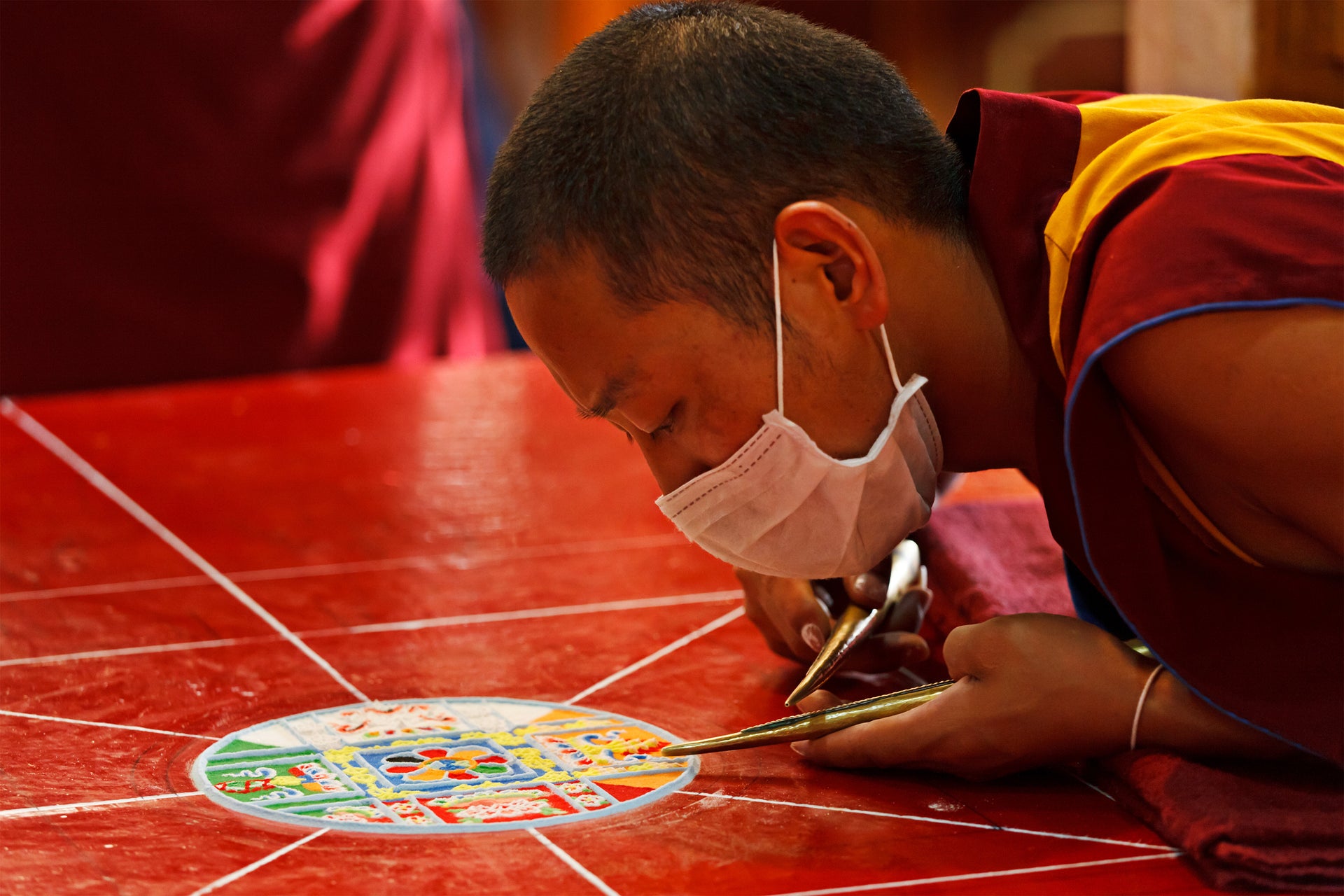
Let's study the Mandalas: their origins and their meanings
Mandalas are enjoying a resurgence in popularity right now. They are found everywhere, both in home decor and in tattoos. Their appeal is obvious, there is something special about these detailed, geometric designs. They're not just pleasing to the eye, they are also very symbolic.
Here is some information on the history of the mandala, and its many hidden secrets.
Very ancient Buddhist origins
The word "mandala" is actually a Sanskrit word originally, it means "circle" or "disc-shaped object". The name suggests something mundane, but for Buddhists, Tantric Hindus, and Jainists, the mandala holds great significance. It is a symbolic object of devotion, representing the universe or an imaginary realm that adepts must contemplate while meditating.
In its simplest form, the mandala consists of a square with 4 doors, containing a circle in the middle. Each of its doors takes the shape of a "T", and more generally, the pattern is symmetrical and balanced. Still, some patterns are really complex, and some even feature Lord Vishnu or Buddha at its center.
Political and religious significance
Detailed geometric patterns are used by Buddhists to remind them of divinity and to aid them in meditation. During meditation, Buddhists focus on the most complex patterns, perceiving this as a revelation of the truth about the universe, and a symbol of our inner existence and our relationship to the world around us.
More surprisingly, the mandala has also been used to represent a political point of view. In Arthashâstra, a text dating from 400 to 200 BC, the author uses a Raja-mandala (or circle of states), to represent the political formations of the time.
Buddhist meditation
For Buddhists, the mandala represents inner purity and enlightenment of the mind. It is seen as a place separate from the secular world, and is often understood as a representation of Nirvana. When they meditate on the mandala, Buddhists feel peace and clarity.
Some Buddhists also build mandalas in the sand, they believe that the positive energy spreads to the surrounding environment, and to people lucky enough to perceive them. There is a belief that mandala painting in sand was invented by Buddha himself, and therefore the process is sacred to the practice of Buddhism. The different motifs represent the different lessons of Buddha, and each motif is preceded by an opening ceremony, in which the sand is consecrated and the forces of good are invoked.
Mandalas in the Western World
Mandalas are often seen as a new symbol in Western culture, it would be the psychoanalyst Carl Jung who introduced it at the beginning of the 20th century, as a solution to explore the unconscious. Every morning he drew circular patterns on his notepad, which he found to be representative of his inner thoughts. Jung began to encourage his patients to do the same, and believed that the mandala was "the self, the whole of the personality which is normally harmonious. "(" My life ": Memories, dreams and thoughts: Carl Jung)
Mandalas today
The mandala continues to be relevant in the modern world today, as a symbol of contemplation, calm and inner exploration. They are found all around us, in architecture, art, fashion, and furnishings, which shows how much people still care about their artistic side and their meaning. Forgotten Tribes offers a wide range of mandalas bed throws in their range, which can be used on the bed or sofa, or even as a wall hanging. It is a daily reminder that one must know how to appreciate thought, mediation and inner peace.

